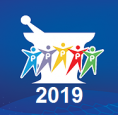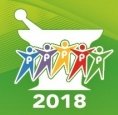In the second part of this series, we are honoured to share perspectives and experiences from two pharmacists – Ms Charlene Ng, who runs the Anticoagulation Clinic (ACC) and Ms Oh Jing Wen, who runs the Cardiac Pharmacist Clinic (CPC). Grace Chang, the lead for Ambulatory Clinics, also provided additional input.
Background
During the Circuit Breaker period earlier this year, pharmacist-run clinics in Khoo Teck Puat Hospital (KTPH) adopted teleconsultation in accordance with our hospital directive as a means to reduce face-to-face visits and ensure safe distancing. Patients were first screened to see if their appointments could be safely deferred; if not, they were contacted to discuss if the consult could be done via teleconferencing. Patients deemed unsuitable for teleconsultations were kept as face-to-face (F2F) consults with patient safety as the guiding principle.
- Why is teleconsultation necessary in your area of practice?
Charlene (ACC): With the ongoing COVID-19 pandemic and Circuit Breaker measures put in place earlier this year, it was necessary to establish a means of continuing anticoagulation monitoring for our patients on warfarin. Having the teleconsultation option allowed us to stratify and prioritise our patients, with patients requiring F2F consultation able to continue seeing us in clinic with safety measures in place, while the more stable patients were seen virtually instead.
Jing Wen (CPC): At CPC, we see patients recently discharged after myocardial infarction and heart failure, who may also have atrial fibrillation or intracardiac thrombi requiring anticoagulation. We review their medications (many of which are newly started), laboratory results, perform drug and disease counselling, optimize medication and many others. During the Circuit Breaker period, patients were still admitted with cardiac conditions and required close monitoring post-discharge. Teleconsultations allowed us to continue delivering care to them during this period.
- Can you describe how teleconsultation is conducted in your area of practice?
Charlene (ACC): Patients identified to be suitable are offered teleconsultation and if required, provided with training on how to use the ZOOM platform. They are scheduled a time to come in for blood test. For ACC, if the point-of care (POCT) INR is within range and the patient is well, they can return home with the teleconsult to be carried out as planned. If the result is out of range, patient is unwell or if the pre-set safety criteria are met, the clinic pharmacist is informed by the nurses to evaluate and determine the action required. Medications are supplied via our MediBox (medication locker) services or the Home Delivery Service.
Jing Wen (CPC): Similar to ACC, patients come in for blood test prior to their scheduled teleconsultation. At the time of blood test, their vitals, height and weight are recorded. Patients can return home if they are well. If they meet the pre-set safety criteria or are unwell, the clinic pharmacist will be alerted to evaluate the patient. Teleconsultation is then conducted at the scheduled time. On completion of the consult, we ensure that the patient is able to follow through with the management plan, then arrange the next tele- or F2F consultation.
- For teleconsultation to take place, are there eligibility criteria to be met before recruitment?
Grace Chang (Clinics IC): Yes. Firstly, teleconsultations are for patients who are clinically stable. They must be able, or have a caregiver who is able, to manage the technology involved and understand the rationale and limitations of teleconsultation. Patients with history of significant non-adherence to medications or medical advice, frequent defaulting of appointments, who are cognitively impaired, have visual or hearing impairments or are unable to care for themselves, would not be considered.
- Did you face any challenges with the process of teleconsultation? E.g. patients being resistant to teleconsultation?
Charlene (ACC): In the initial phase, there was a steep learning curve for both the patients and our clinic pharmacists in terms of using the platform and troubleshooting connection issues. We were fortunate to have support staff on our team who contacted the patients beforehand to offer technical help. Though majority of patients managed to figure it out after a while, we had a few occasions where teleconsult was eventually unsuccessful despite best efforts and these patients had to be switched to phone or face-to-face consults instead.
Jing Wen (CPC): When the Circuit Breaker period started, our pharmacists had to quickly screen and offer teleconsults to a large number of patients within a short period of time. It was challenging to explain teleconsults to elderly patients who were not accustomed to using mobile phones for functions aside from texting and calls. Despite this, we managed to do so if their family members were around to assist.
- Any tips to increase acceptance rates and to prepare patients for teleconsultation?
Charlene (ACC): One useful approach is to introduce teleconsultations early in the patient’s journey with us, right from the very first visit with ACC. This allows patients and caregivers time to consider this service and make arrangements ahead of time once they are stable enough to be seen via teleconsult. We initially had support from colleagues to guide patients on how to use the teleconsult platform. Thereafter, we developed a simple slide deck that could be sent to patients ahead of time to guide them on setting it up at home by themselves.
Jing Wen (CPC): The pandemic provided an opportunity to materialize teleconsultation expeditiously. Most patients understood the need for continued monitoring despite the pandemic situation and managed to overcome their initial hesitation. Explaining to and involving family members or grandchildren who had already used teleconferencing for work or school helped to ease patients into this and boost their confidence.
- Were there measures put in place to enhance the safety of teleconsultation?
Both: Yes. All pharmacists involved in teleconsults were required to undertake and pass the MOH Telehealth Course and follow guidance according to our Hospital Policy on Teleconsultation Workflows. In addition, criteria were drawn up together with the clinic nurses to ensure patients were assessed safely. With regards to cybersecurity, only the IHIS-approved Zoom account was used. Our electronic documents were enhanced with mandatory fields to ensure that patient identifiers, location and privacy are verified for each encounter.
- Have there been any interesting encounters so far?
Charlene (ACC): We have had patients sit in their cars in the car park for their teleconsults, or in their offices during their lunch breaks. I encountered a patient who attended the consult at her workplace so that she could enlist her younger colleagues to provide technical support, without which she would not be able to teleconsult with us.
Teleconsults particularly benefited certain groups of patients, such as those on haemodialysis. Previously, they had to deal with the effort of attending ACC consults on non-dialysis days, on top of their dialysis schedules. With teleconsult, they are now able to come for a quick blood draw on their non-dialysis day and consult with the pharmacist even on a dialysis day, which is significantly more convenient.
Jing Wen (CPC): For some patients, teleconsultations provided us an opportunity to better understand them, and provide an additional glimpse to their medication management at home. Mdm A was an elderly lady who previously always attended clinic alone. When asked her to show us her medications via teleconsultation, we observed that she had large amounts of medication in various parts of her home in poor storage conditions. It provided insight into her adherence and it was no wonder why she was confused with her medications. We took the opportunity to gently encourage her family members to assist in tidying up her supplies and bring them to us for physical reconciliation.
- Beyond COVID-19, do you think teleconsultation will be here to stay?
Charlene (ACC): I do think it is here to stay. We have had positive feedback from our patients, who would otherwise have difficulties coordinating frequent consultations. With our patients becoming more tech-savvy (even our elderly patients), we feel this complements existing services to provide a better experience for our ACC patients.
Jing Wen (CPC): Yes. Teleconsultation is fast becoming part of the fabric of healthcare. If done right, it can complement in-person consultations. Many of our patients have found teleconsultation to be convenient and reduce their waiting time in the hospital, and even requested to continue teleconsultations beyond the circuit breaker period.
Lastly, sharing a piece of patient feedback on one of our ACC pharmacists, Vincent See (Senior Pharmacist, Woodlands Health Campus), which was received and published on the home page of our hospital intranet.

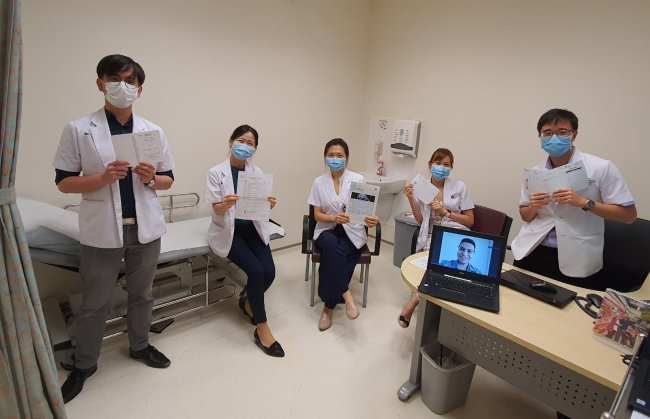
KTPH Anticoagulation Clinic Pharmacist Team.
From Left to Right:
Mr Henry William (Senior Pharmacist), Ms Lam Miao Hui (Pharmacist), Ms Anita Hu (Senior Pharmacist), Ms Charlene Ng (Senior Pharmacist), Dr Fabian Aw (Senior Pharmacist). Via Zoom, Mr Vincent Ng (Senior Pharmacist)
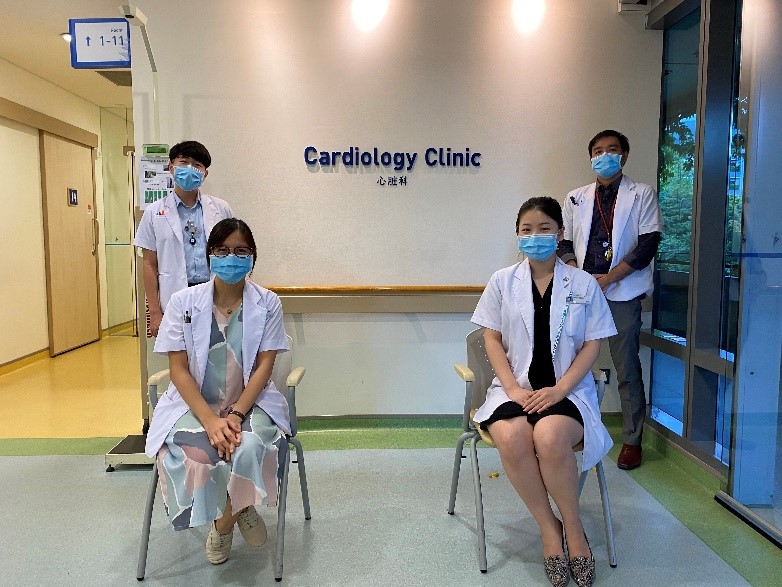
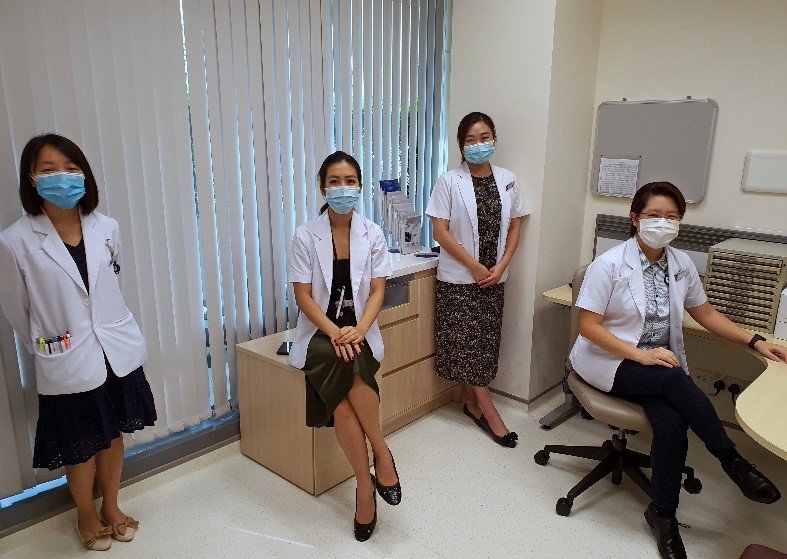
KTPH Cardiology Pharmacist Clinic Team.
Picture 1: Mr Wong Hong Yun (Senior Pharmacist), Ms Laurane Lim (Senior Pharmacist), Ms Jocelyn Diamantha (Pharmacy Technician), Mr Samuel Ho (Senior Pharmacist)
Picture 2: Ms Lin Yingying (Research Officer), Ms Low Kay Wei (Senior Pharmacist), Ms Oh Jing Wen (Senior Pharmacist), Dr Grace Chang (Senior Clinical Pharmacist).
Not pictured: Ms Stephenie Lim (Senior Pharmacist), Dr Jeremy Chia (Senior Clinical Pharmacist).

